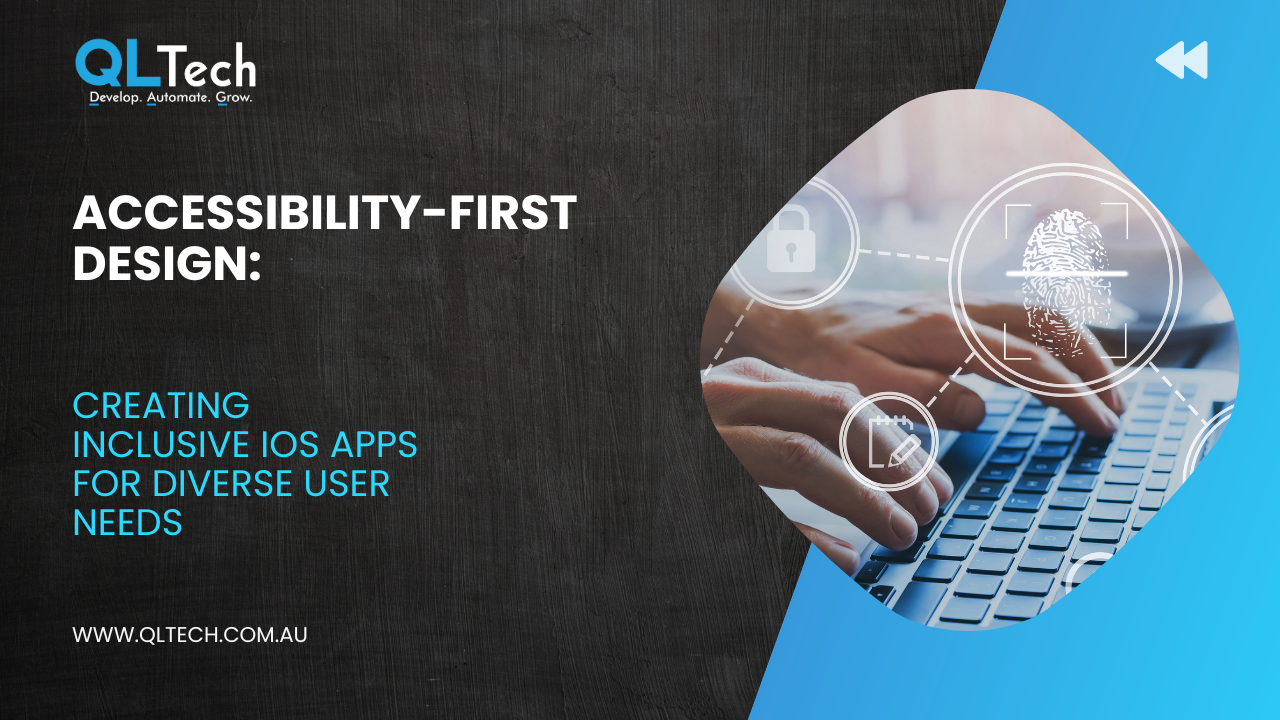Accessibility-First Design: Creating Inclusive iOS Apps for Diverse User Needs
In today’s digital landscape, accessibility is paramount for ensuring that all users, regardless of their abilities, can effectively engage with digital products and services. This is particularly crucial for iOS apps, where designers and developers have the opportunity to prioritise accessibility from the outset. This article explores the principles of accessibility-first design and provides practical strategies for creating inclusive iOS apps that cater to diverse user needs.

- Understanding Accessibility Guidelines:
Familiarise yourself with the accessibility guidelines provided by Apple for iOS app development. These guidelines outline best practices for making apps usable by people with disabilities, including guidelines for design, interaction, and content accessibility. - Prioritising User Experience (UX) Research:
Conduct thorough UX research to understand the diverse needs and preferences of your target audience, including users with disabilities. Engage with individuals who have different abilities to gain insights into their challenges, preferences, and requirements when interacting with iOS apps. - Implementing VoiceOver and Accessibility Features:
Ensure that your iOS app fully supports VoiceOver, Apple’s screen reader technology, which enables users with visual impairments to navigate and interact with apps using spoken feedback. Additionally, leverage other built-in accessibility features such as Dynamic Type, Voice Control, and Switch Control to enhance usability for users with various disabilities. - Designing for High Contrast and Legibility:
Optimise the visual design of your iOS app for high contrast and legibility to accommodate users with low vision or color blindness. Use clear typography, sufficient color contrast, and intuitive iconography to enhance readability and comprehension for all users. - Providing Alternative Text and Descriptions:
Include descriptive alternative text for all images, icons, and interface elements within your iOS app. This ensures that users who rely on screen readers or alternative input methods can understand the purpose and context of visual content. - Ensuring Keyboard Accessibility:
Design your iOS app to be fully navigable and operable using keyboard input alone. Implement keyboard shortcuts, focus indicators, and logical tab order to facilitate seamless navigation and interaction for users who cannot use touch gestures. - Testing with Accessibility Tools and Assistive Technologies:
Regularly test your iOS app with accessibility tools and assistive technologies, such as VoiceOver, Switch Control, and Voice Control, to identify and address any usability issues or barriers to accessibility. Conduct usability testing with individuals with disabilities to gather firsthand feedback and insights. - Iterating and Improving Accessibility Over Time:
Accessibility is an ongoing process, and it’s essential to continuously iterate and improve the accessibility of your iOS app based on user feedback and evolving accessibility standards. Regularly update your app to incorporate accessibility enhancements and address any accessibility-related issues that arise.
Conclusion: By adopting an accessibility-first approach to iOS app design, developers can create digital experiences that are inclusive, equitable, and empowering for users of all abilities. By prioritising accessibility features, conducting user-centered research, and embracing inclusive design principles, iOS app developers can ensure that their products are accessible to everyone, regardless of their individual needs or challenges. By embracing accessibility as a core design principle, iOS app developers can make a positive impact on the lives of millions of users worldwide and contribute to building a more inclusive digital future.